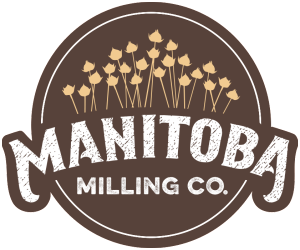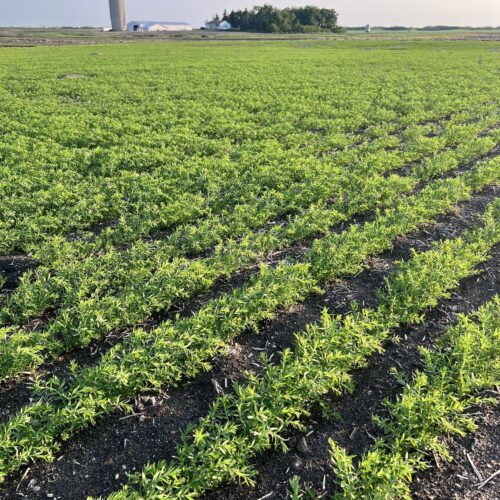Regenerative Agriculture
Regenerative agriculture is gaining wider recognition as a sustainability topic. However, for many, it remains unclear what regenerative agriculture is and how it differs from organic agriculture. There is no straightforward answer to this question because, unlike organic agriculture, regenerative agriculture doesn’t have a strict set of standards, nor can it be “tested” for.
Regenerative agriculture, which includes farming and ranching, is a holistic approach to growing crops and livestock where producers aim to improve the health of their land and the ecosystem it supports. Because each piece of land is different, regenerative agriculture is not a “one size fits all” approach. Producers must constantly evaluate the needs of their land and crops and adjust their practices accordingly.
Perhaps the most defining feature of regenerative agriculture is that its goal is not only to maintain the health of the land but to improve it while still growing crops efficiently. It goes beyond being sustainable, and it doesn’t necessitate that crops are grown organically. In fact, organic farming practices are not always regenerative while some conventional practices are!
Soil’s Crucial Role
At its core, regenerative agriculture is about soil health. Because soil is the primary way in which farmers interact with the environment, it is often the most impacted by agriculture. Furthermore, because soil influences everything else in an ecosystem, including water, the atmosphere, and plant and animal life, improving soil health improves the environment. It is a critical component to regenerative farming.
Soil is often overlooked, but without it, there would be no life on earth. Soil is responsible for numerous essential roles, some of which may be surprising.
- Regulating water
- Soil prevents rainwater and snowmelt from flowing too quickly over the ground and depositing straight into rivers or oceans. Healthy soil slows down the movement of water so that it can slowly sink into the ground, refilling underground reservoirs. Groundwater is our largest source of accessible freshwater, accounting for 90% of accessible freshwater resources [1]. About 1.5 billion people depend on groundwater for drinking water[1].
- Filtering and buffering pollutants
- As water seeps down through the soil, it is filtered, and pollutants are buffered by compounds in the soil [2]. This filtering and buffering action keeps surface water and oceans clean for freshwater and marine life and purifies groundwater for human use.
- Cycling nutrients
- Carbon, nitrogen, phosphorus, and other nutrients are stored, transformed, and cycled by soil [2]. When a plant or animal dies, it is decomposed by microorganisms living in the soil. Nutrients are released through decomposition and taken up by plants which are then consumed by animals for energy. Without this cycling of nutrients, there would be no energy for life to exist on earth.
- Sustaining Plant and Animal Life
- Soil provides habitat for numerous species of animals, plants, and fungi. There are as many as 10 billion organisms in 1 gram of soil! [3]
- Physical Stability and Support
- Soil provides support for plants and trees as well as for human structures. It also preserves plant and animal fossils and human artifacts.
- Carbon sink
- Earth’s soils contain around 2,500 billion tons of carbon which is three times as much as the atmosphere and four times as much as plants [4]. If soil resources are depleted or degraded, carbon emissions into the atmosphere may be increased. On the contrary, regenerative agriculture practices that promote soil health can help to sequester carbon.
Soil Is Not A Renewable Resource
Soil Formation
Soil is not a renewable resource because, like coal or oil, it cannot be renewed in our lifetimes. Soil is made from dissolved and eroded bedrock mixed with organic material from microorganisms, plants and animals. It can take 100-1,000 years for just 1 inch of topsoil to form and the speed of formation depends on geology, location, climate, and more [5, 6]. Unfortunately, erosion can occur much faster than soil formation. Globally, soil loss is occurring at 10-40 times the rate of soil formation [7]. To make matters worse, not all soil is good for farming. Only a small percentage of earth’s soil is suitable for agriculture and once it has been degraded, there is not much that can be done to bring it back.
Soil Structure
If you look at soil, you may notice that it is clumped together in different shapes—this is the soil’s structure. Soil structure is the arrangement of mineral and organic soil particles and the spaces between them [7]. The gaps between soil aggregates allow for the movement, filtration, and storage of water as well as the storage of oxygen. Because plant roots, fungi, and organisms in soil all need adequate amounts of water and oxygen to live, the structure of soil aggregates is an important part of healthy and fertile soil.
Soil structure is determined by chemical, physical, and biological properties and factors. Things like the chemical composition of the soil’s parent material (bedrock), the amount and type of plants growing in the soil, and amount of rainfall all determine its structure. Organic compounds produced by microorganisms, worms, and fungi living in the soil, bind with minerals and help to “glue” soil particles together in aggregates [8].
Soil structure can be changed through compaction or the removal of organic matter. Large aggregates allow for pockets of water and air to exist in the soil. However, when soil is compacted by heavy machinery, structures, or large animals, these pockets are removed. Tilling can expose organic matter to oxygen causing it to decompose quicker and prevents the accumulation of new organic matter [8]. Since organic matter is one of the most important factors in soil aggregate formation, this can have serious effects on soil structure. Once a soil’s structure is destroyed, it can take a long time for it to be restored due to the need for biological activity overtime and binding compounds for its formation.
Loss of Organic Matter
Soil in heavily forested areas is especially susceptible to degradation. In forest environments with heavy rainfall, soil tends to be low in nutrients as the excess water flushes nutrients out of the soil. The primary source of nutrients for these soils is the layer of organic matter on top of the soil which tends to be thick and rapidly decays in forests. If a forest is cut down, the soil beneath it will quickly become infertile and erode due to the lack of root systems and accumulation of organic material. Once the organic matter is no longer in the soil, it becomes infertile, and the land cannot be used for either reforestation or farming.
Regenerative Agriculture Practices
No-Till Farming
No-till farming is the practice of leaving the stubble (roots and plant residue) from the previous year’s crop in the ground and using specialized machinery to sow new seed without plowing or breaking up the soil. No-till farming has huge benefits for soil health because it decreases erosion, prevents soil structure degradation, and increases the organic matter added to the soil. It also protects helpful soil organisms such as earth worms. One challenge of no-till farming is that it sometimes requires the use of chemical herbicides because adequate weed control typically requires tilling. For this reason, organic farming can prevent the use of no-till practices [9].
Cover Cropping
Cover crops are not always planted for the purpose of harvesting for profit. Farmers plant cover crops to protect and improve soil health. Cover crops have a variety of benefits including preventing erosion, adding nutrients and organic matter back into the soil, protecting soil structure, and providing habitat for animals.
Crop Rotation
Crop rotation is the practice of switching what crop is planted on a piece of land on a year-to-year or multi-year rotation. Because some plants require more nutrients than others, growing the same crop year after year can leave the soil stripped of nutrients or nutritionally imbalanced. Crop rotation may also limit certain pests or weeds and can improve soil diversity [11].
Conclusion
Protecting our soil is important to us because it directly impacts the quality of our flaxseed and the viability of our land for future farming. Almost all farmers have an interest in preserving the health of the soil on their farmland; if they degrade it, they lose big in terms of land value and decreased yields.
It can be easy to feel as though modern farming is at odds with soil health and environmental protection. However, modern technology has come a long way, and we can now farm more efficiently with less impact on the soil. Investing in equipment has been an important aspect of reducing our impact on the land. It allows us to be precise about fertilizer applications, reducing the amount of fertilizer needed for the growing season, and means we no longer till our land.
One reason [of many] to love flax is that it’s naturally more sustainable than some other crops. Flax is often grown as a dryland crop, meaning it doesn’t require irrigation. This allows us to save water and prevent water erosion. Flax is also somewhat pest resistant, so it requires very little pesticide application, if any, which benefits pollinators and other insect populations.
Hopefully, regenerative agriculture and soil health will become better understood by consumers and producers in the coming years. Regenerative agriculture is not as simple as putting a label on your package; It requires diligent attention to the needs of both the land and crops and adjusting practices when needed. Healthy land leads to better yields and profitability for farmers as well as higher quality seed.
“Protecting our soil is important to us because it directly impacts the quality of our flaxseed and the viability of our land for future farming.”
Notes
[1] Freshwater resources: volume by continent, GRID-Arendal, Published 2009, Accessed May 2025, https://www.grida.no/resources/5608
[2] Soil Health, USDA NRCS, Accessed May 2025, https://www.nrcs.usda.gov/conservation-basics/natural-resource-concerns/soils/soil-health
[3] Milo et al. Nucl. Acids Res. (2010) 38 (suppl 1): D750-D753, BNID 110152 Accessed May 2025, https://bionumbers.hms.harvard.edu/bionumber.aspx?id=110152
[4] Douglas Broom, “What are the world’s biggest natural carbon sinks?,” World Economic Forum, July 2023, https://www.weforum.org/stories/2023/07/carbon-sinks-fight-climate-crisis/
[5] Soil Basics, University of Illinois Extension, Accessed May 2025, https://extension.illinois.edu/soil/soil-basics
[6] Prairie Soils, Minnesota Dept. Natural Resources, Accessed May 2025, https://www.dnr.state.mn.us/prairie/why-important/prairie-soils.html
[7] Structural Degradation, UC Davis Global Soil Health Portal, Accessed May 2025, https://soilhealth.ucdavis.edu/soil-challenges/structural-degradation
[8] Soil Quality Indicators, USDA NRCS, Published June 2008, Accessed May 2025, https://www.nrcs.usda.gov/sites/default/files/2022-10/Soil%20Structure%20and%20Macropores.pdf
[9] No-Till, Sustainable Agriculture Research and Education (SARE), Accessed May 2025, https://www.sare.org/sare-category/crop-production/conservation-tillage/no-till/
[10] Value of crop rotation in nitrogen management, Iowa State University Extension, Accessed May 2025, https://crops.extension.iastate.edu/encyclopedia/value-crop-rotation-nitrogen-management
[11] Cover Crops and Crop Rotation, USDA, Accessed May 2025, https://www.usda.gov/about-usda/general-information/initiatives-and-highlighted-programs/peoples-garden/soil-health/cover-crops-and-crop-rotation#:~:text=Cover%20crops%20are%20traditionally%20planted,the%20soil%20later%20for%20enrichment.

